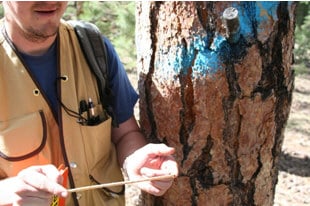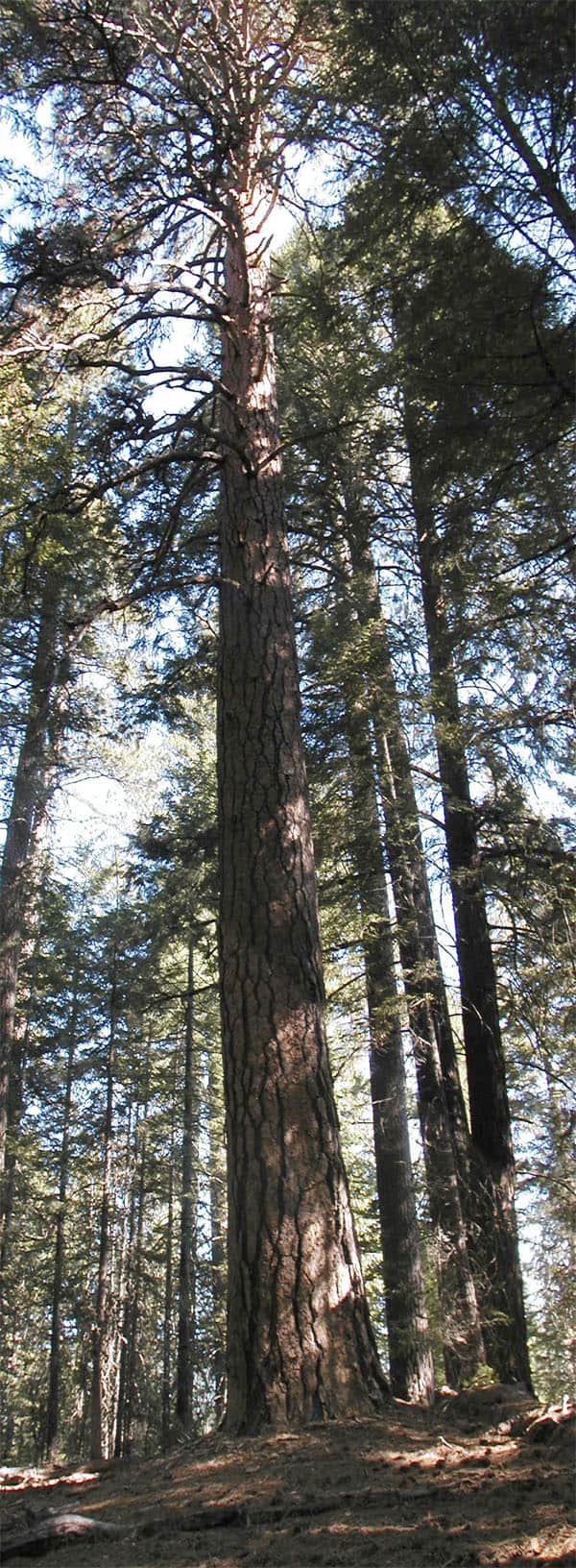(Below is the press release from the Center for Biological Diversity. Click here to download a copy of the appeal. Photos of the Jacob Ryan project area, including old-growth trees aged by the Center and previously marked for logging by the Forest Service, can be seen and downloaded here. – mk)

Photo: Center for Biological Diversity ecologist Jay Lininger displays the core of 180-year-old ponderosa pine marked for logging at the Jacob Ryan timber sale. Center photo.
FLAGSTAFF, Ariz.— For the third time in a decade, the Center for Biological Diversity and Sierra Club today administratively appealed a 25,000-acre timber sale that is slated to log old-growth trees and forests on the Kaibab National Forest near Grand Canyon’s north rim.
Approved in January, this is the Forest Service’s fifth iteration of the Jacob Ryan timber sale since 2003, each plan seeking to log old-growth trees and forests. The Center and Sierra Club blocked two earlier iterations of the sale; the Forest Service voluntarily withdrew two others.
“This forest needs a limited amount of small-tree thinning to safely reintroduce natural fires, but for a decade the Forest Service has rejected common sense and opted instead to cut down old trees,” said Jay Lininger, an ecologist with the Center. “The Jacob Ryan timber sale makes a mockery of forest restoration and exposes the need for leadership and reform within the Forest Service.
” Today’s appeal challenges logging of old-growth trees and argues that logging will not retain sufficient forest canopy to support the rare northern goshawk — a woodland raptor. A source population of goshawks lives on the Kaibab Plateau, where Jacob Ryan is located. According to a Forest Service report, goshawks are “vulnerable to extirpation or extinction in Arizona.”
“It is just outrageous that the Forest Service is proposing for the fifth time to log these old growth and large trees, when we have so little remaining,” said Sandy Bahr, chapter director for the Sierra Club’s Grand Canyon (Arizona) Chapter. “The old growth and large trees make up less than 3 percent of our forests and are a critical component of healthy forests and essential for wildlife species such as the northern goshawk. In a real restoration project, they would be the centerpiece, not slated for logging.”
In its last failed attempt to implement the timber sale, the Forest Service in 2009 admitted violating its own management plan in response to a Center appeal. Center staff documented old-growth trees marked for cutting, despite bogus claimsby the Forest Service that it would protect old growth.
